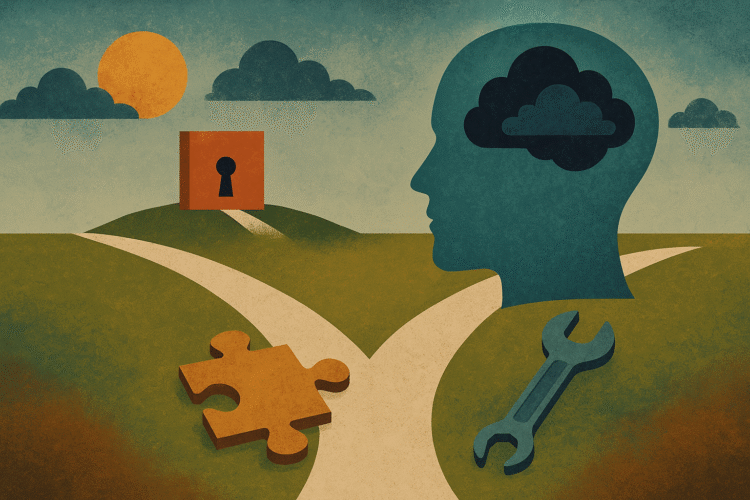Dual Diagnosis Explained: Understanding the Complex Relationship Between Mental Health and Addiction
Key Takeaways
- Dual diagnosis occurs when mental health disorders and substance use disorders co-exist.
- Each condition can worsen the other, creating a challenging “downward spiral.”
- Standard treatments often fail unless both conditions are addressed simultaneously.
- Integrated treatment models and specialised recovery programs deliver the best outcomes.
Table of Contents
What is Dual Diagnosis?
Dual diagnosis explained refers to a clinical scenario in which an individual receives simultaneous diagnoses for both a mental health condition and a substance use disorder.
Mental conditions often involved include major depressive disorder, anxiety disorders, bipolar disorder, PTSD, schizophrenia, and various personality disorders.
On the substance use side, patients may struggle with alcohol dependency, opioid use disorder, stimulant abuse, cannabis use disorder, or polysubstance abuse.
The interaction between these disorders is more than coincidental. When left untreated, they can fuel one another in a vicious cycle:
“Substance use can temporarily mask mental health symptoms, but over time it can aggravate the very issues the patient was trying to escape.”
Statistical studies show that over half of people with a serious mental illness will develop a substance use disorder in their lifetime.
Yet, when clinicians address only one condition, relapse rates soar, hospitalizations increase, and long-term recovery becomes elusive.
For a deeper dive into the clinical definition, see
Dual diagnosis explained.
Exploring the Mental Health and Addiction Link
The mental health and addiction link is well documented:
- Self-medication: Individuals use substances to manage anxiety, depression, or PTSD symptoms.
- Neurobiological changes: Chronic substance use can alter brain chemistry, making mental health disorders more likely.
- Bidirectional influence: Mental health disorders drive substance use, and substance use exacerbates mental health issues.
For more on managing alcohol-related issues in dual diagnosis, check out this
guide on supporting patients with alcohol use disorder.
Treatment Approaches for Dual Diagnosis
Effective treatment requires a coordinated, multifaceted plan that addresses both conditions at once.
Key strategies include:
- Integrated therapy: Combining mental health counseling and addiction treatment in the same setting.
- Medication management: Using psychiatric medications alongside medication-assisted treatment (MAT) for addiction.
- Behavioral therapies: Cognitive-behavioral therapy (CBT), motivational interviewing, and trauma-informed care.
- Peer support: Group therapy and 12-step programs tailored to co-occurring disorders.
Research from Dartmouth further underscores the need for providers trained in both domains—
see
integrated dual diagnosis protocols.
Integrated Recovery Programs
Recovery programs designed for dual diagnosis incorporate:
- Holistic assessment: Comprehensive intake evaluations for mental health and substance use.
- Personalized care plans: Tailored to individual symptom profiles and recovery goals.
- Continuum of care: From inpatient stabilization to outpatient counseling and community support.
- Ongoing monitoring: Regular check-ups to adjust treatment—because mental health support is as essential as a regular check-up (source).
By addressing both disorders simultaneously, these programs break the cycle of relapse and foster lasting recovery.
Frequently Asked Questions
1. What exactly is a dual diagnosis?
A dual diagnosis occurs when someone is diagnosed with both a mental health disorder and a substance use disorder at the same time.
Treating only one condition often fails because the unaddressed disorder can undermine progress.
2. Why is integrated treatment so important?
Integrated treatment ensures both disorders are treated concurrently by specialists in mental health and addiction,
reducing relapse rates and improving overall outcomes.
3. How can I support a loved one with dual diagnosis?
Encourage them to seek a program that offers integrated care, attend family therapy sessions, and educate yourself on both conditions.
4. What treatment options are available?
Options include inpatient rehab, outpatient therapy, medication-assisted treatment, cognitive-behavioral therapy, and peer support groups.
5. Where can I find more information?
Explore resources like
MedlinePlus Dual Diagnosis
or consult your healthcare provider for referrals.
“`

























